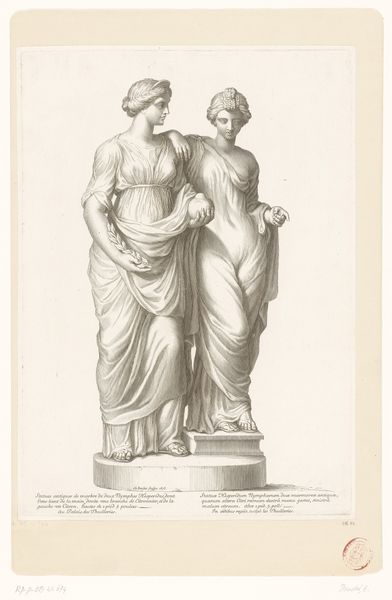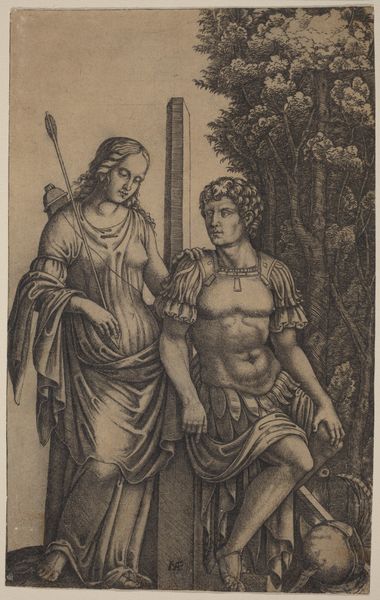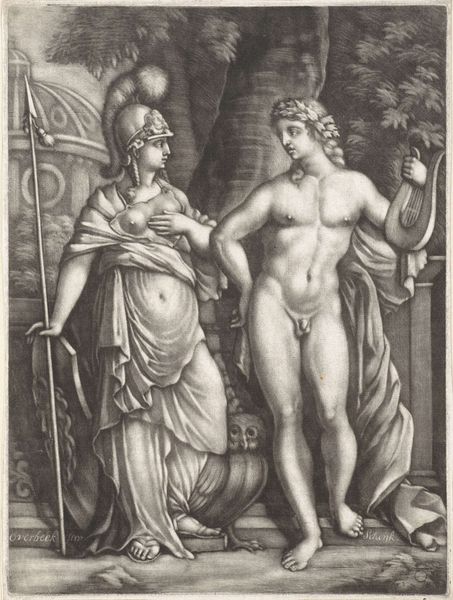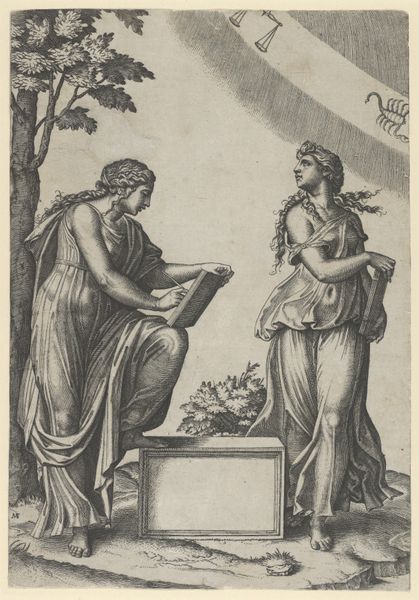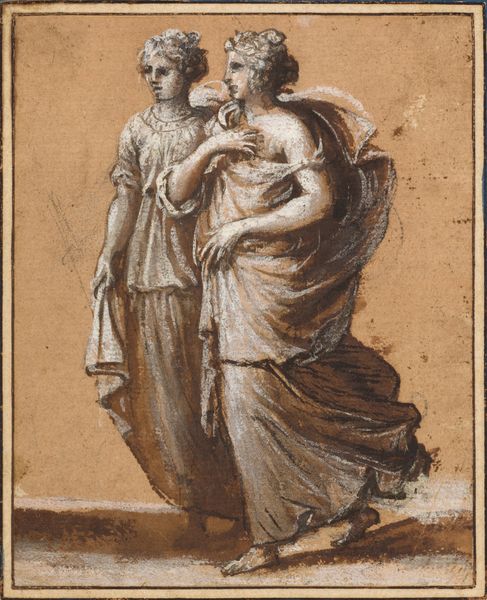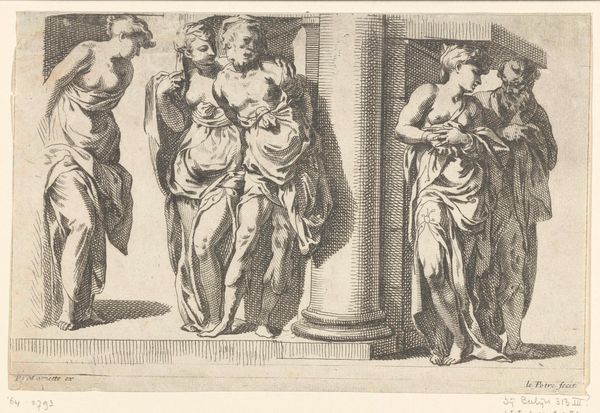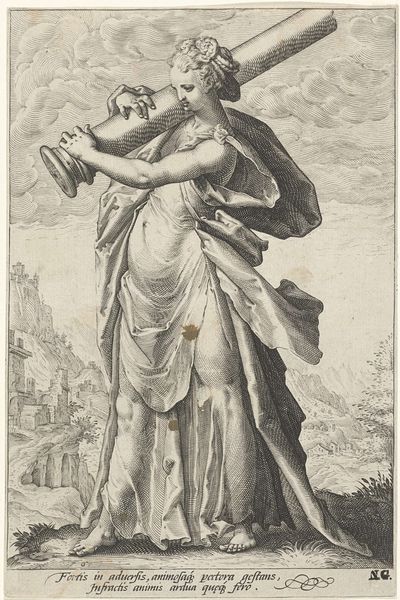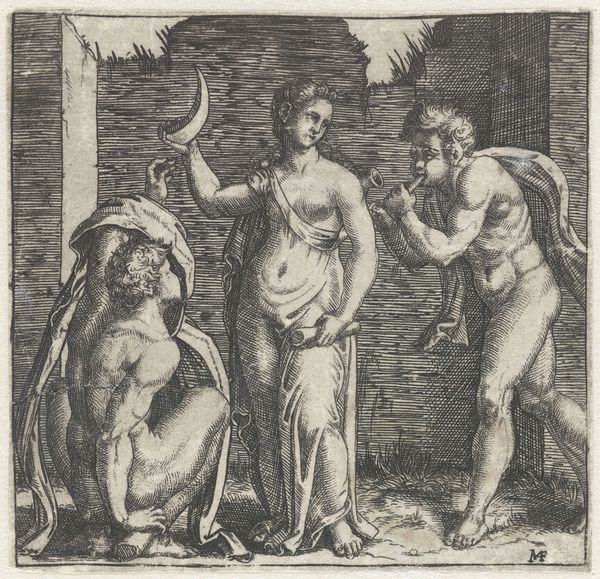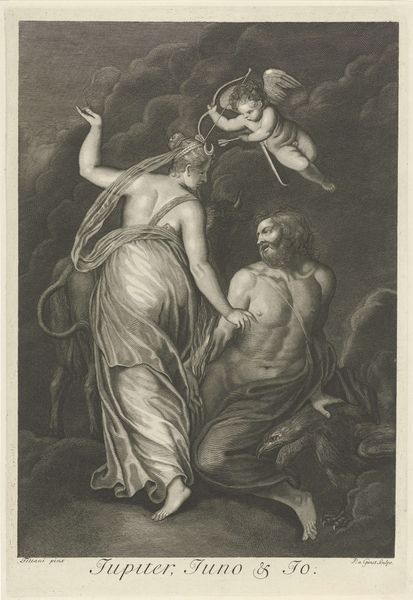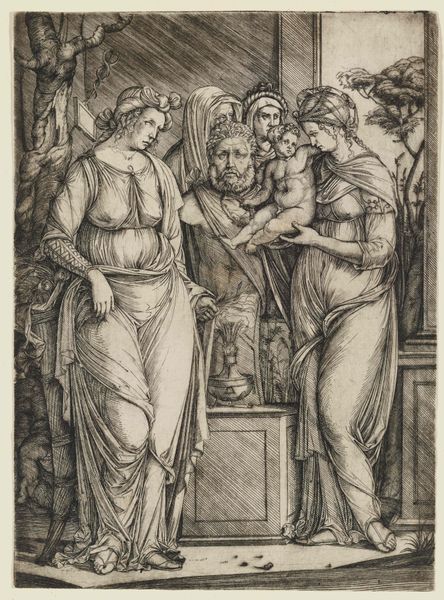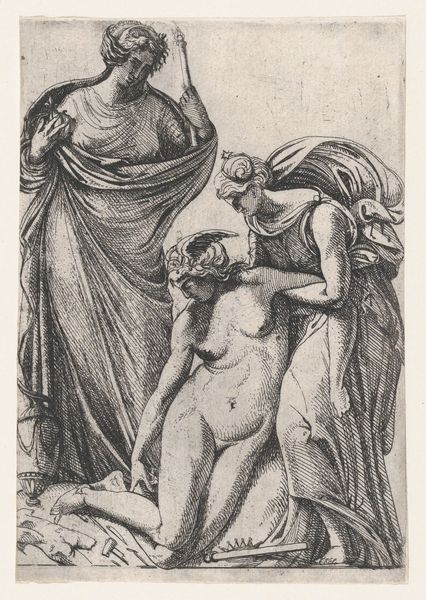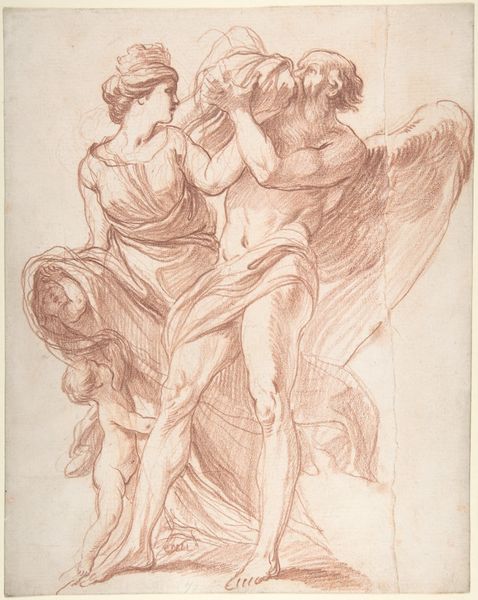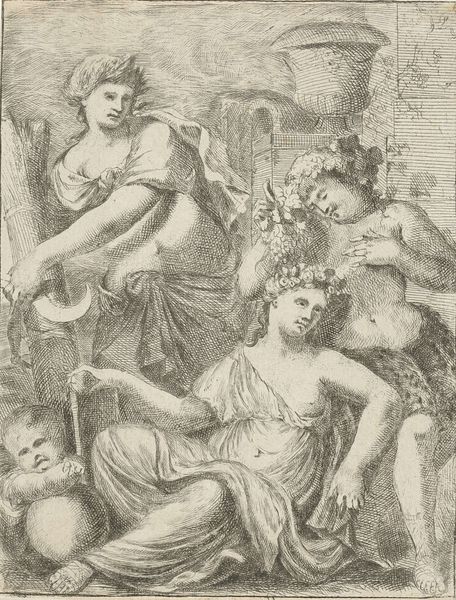
drawing, print, paper, engraving
#
drawing
#
allegory
# print
#
figuration
#
paper
#
history-painting
#
italian-renaissance
#
engraving
Dimensions: 302 × 152 mm
Copyright: Public Domain
Curator: The solemnity of this print really strikes me—it's so formal and stately. Editor: This engraving is called "The Incense Burner," made by Marcantonio Raimondi around 1520. It's currently held at The Art Institute of Chicago. Curator: Visually, the piece draws on classical antiquity with those idealized figures. They're almost like caryatids supporting the ornamented vase. I'm interested in what this says about the role of classical imagery in shaping notions of civic virtue during the Renaissance. Editor: And the material choices reinforce that connection! The printmaking process itself – engraving on a copper plate to create multiples – echoes the Roman tradition of reproducing sculptures. This isn't just about aesthetics; it's about democratizing access to "high" art forms. Look at the precision in the line work too—consider the labor involved in creating those delicate cross-hatchings to model the figures. Curator: I agree. It reflects the period’s emphasis on skill. The incense burner itself, as a central image, also speaks volumes. It was meant for burning aromatics. Given Raimondi’s position within Raphael's circle, I read this as indicative of ritual performance in Renaissance society and possibly about his status as an acclaimed artist. The burner is not only physically elevated but conceptually as well. Editor: Exactly. And the choice to reproduce this imagery would likely have expanded its reach, enabling patrons of varying economic levels to consume this classical vocabulary through cheaper prints, expanding those values to more than only the wealthy elite. I wonder too, who these women might depict or were inspired by and the choices they were allowed to make in their everyday work. Curator: Yes, you raise a key point. The relatively low cost of prints definitely played a vital role in circulating visual ideas at the time, reaching audiences that paintings and sculptures simply couldn’t. The symbolism becomes so accessible! Editor: Thinking about Raimondi's print, I'm struck by the material choices informing social accessibility and meaning-making. Curator: I am interested in its ability to reflect Renaissance social values as well. These multiple layers enhance this print’s visual sophistication.
Comments
No comments
Be the first to comment and join the conversation on the ultimate creative platform.
